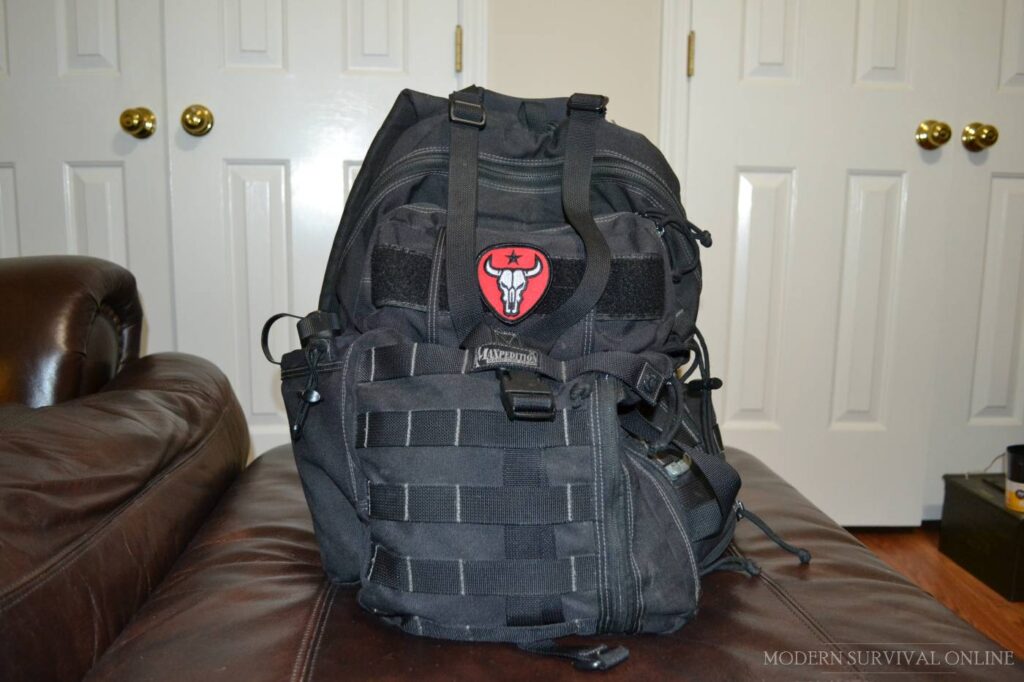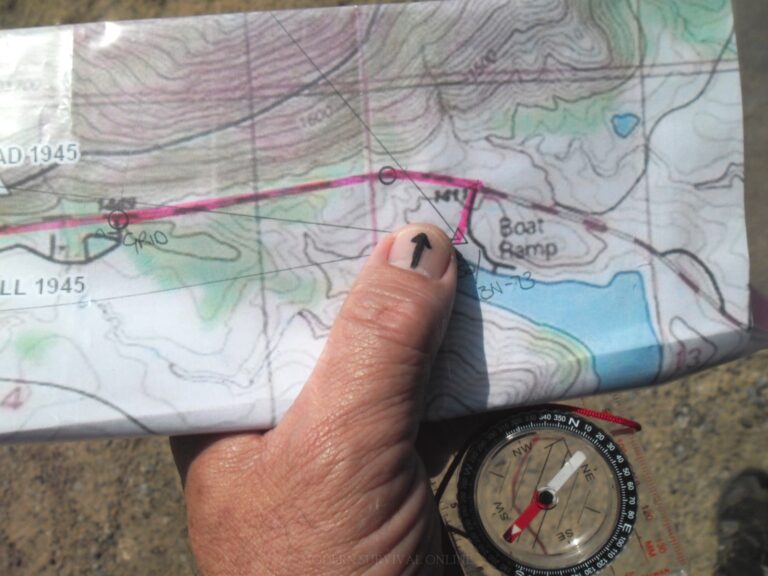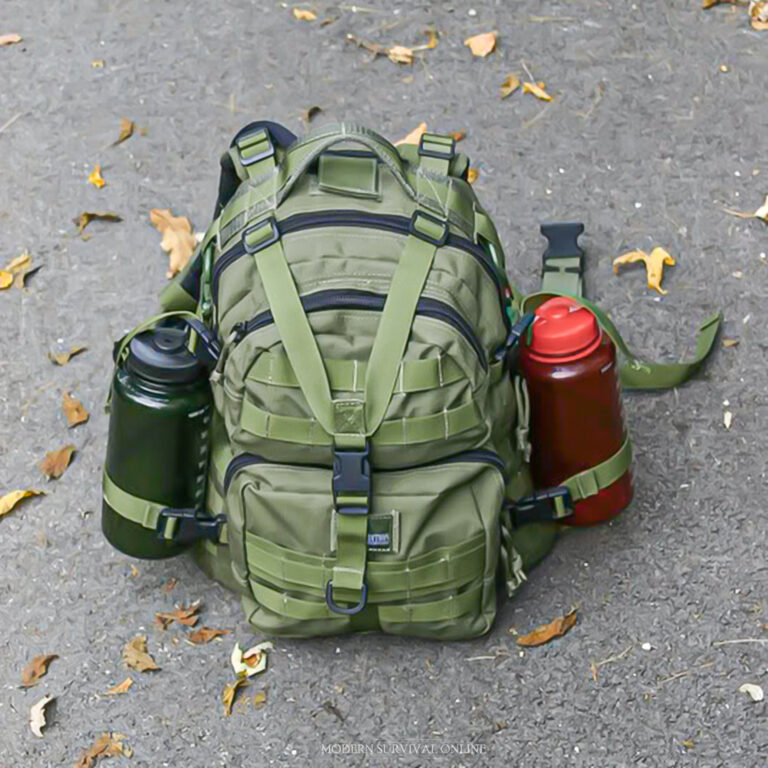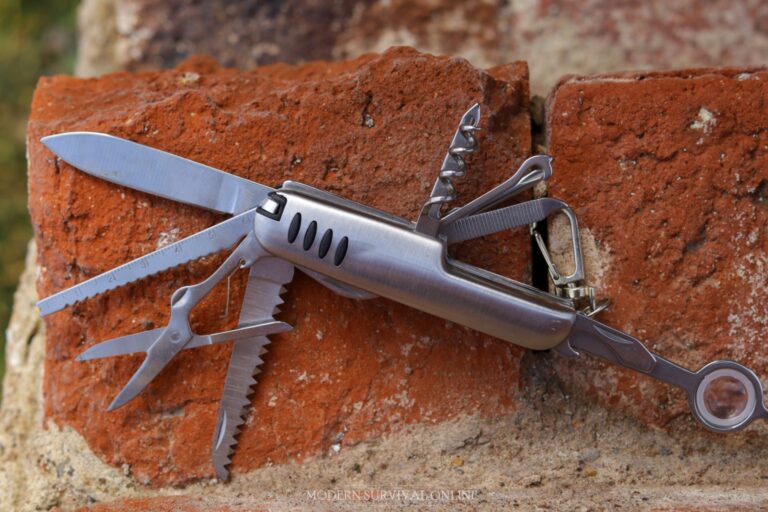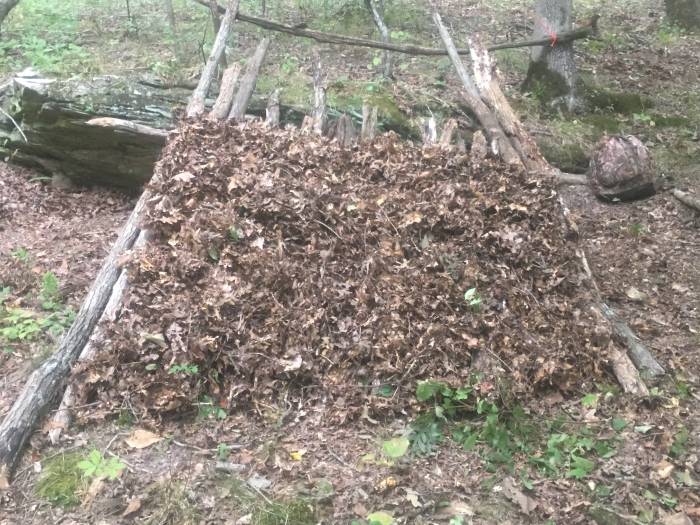Deception is one of humanity’s oldest traits, and unfortunately, or perhaps fortunately – depending on your endeavors – persists all the way up to today. Various interests throughout the ages have endeavored to stamp out lying, fibbing, and pulling the wool over someone else’s eyes, but no matter if they are religious institutions or courts of law liars and the lies they tell have endured.

Instead of turning this article into just another polemic about lies, liars and the damage that they can inflict, we’re going to make this a practical exercise in dealing with both. After all, a big part of prepping is just accepting things for what they are and dealing with them, not whining about what we wish they were. Why not do the same thing for the liars, deceivers and cheats that populate this Big Blue Marble we are all stuck on?
In today’s article I’ll be presenting some tips and guidance on determining if someone is lying to you. I cannot promise you’ll be a Human Lie Detector by the end of it, but you will be better equipped to spot and hopefully avoid deception in the future.
The Why of the Lie
People lie for all kinds of reasons. Whatever their objectives are, whatever they hope to gain the principles of lying are quite simple. People lie to alter the perception of others and to influence their judgment. That’s it. We don’t have to delve too deeply into the fascinating and complicated matrices of human decision making, but let it suffice to say that a lie, skillfully crafted and artfully told, can completely change the outcome of an interaction in favor of the liar.
Apply this to prepping. Why might someone lie to you in a survival situation? They could do it for all kinds of reasons. They might lie and say they are worse off than they really are, or they have someone in their group or that they are taking care of that is in a bad way, in order to play on your sentiment and get vital supplies from you. They might lie about an emergency or something they need help with in order to lure you into an ambush or some other trap. They certainly may lie to deflect suspicion or blame from them if they have been up to no good, or planning on getting up to no good.
Some do it somewhat more passively, just as a way to obfuscate and keep their cards, and therefore their status, close to the chest. Information is always ammunition, and you don’t want that ammunition to be loaded and aimed at you. Therefore it follows that some people live lives that sort of have a permanent campaign of disinformation swirling around them. It is not that they have anything to gain from all this lying or that they are just pathological liars, but that is not always the case.
What matters most is that you don’t get taken by a liar, and especially not on something that could be of paramount importance. Decisions you make in a survival situation that are founded on lies may result in a negative outcome, even your death. Believing someone who is begging for help or otherwise in need may see you lured into a trap that you will not escape or deprived of vital supplies that would have been better used for your survival and that of your group or family.
That means you need to learn how to spot liars and react accordingly.
But There’s a Catch…
Let’s get this out of the way right up front: no matter what some expert tells you, no matter what they promise, no matter what they claim there is simply no way to be sure if someone is telling you a lie unless you have evidence to the contrary. There is no single behavior, not even sets of behavior that are a certain tip-off that someone is being deceptive.
Detecting lies is not a science. Is a comprehensive skill that must be developed, honed and cultured. You’ll have to observe and analyze multiple behaviors, and seemingly conflicting ones at that, and then compare them against the baseline personality traits that you have established prior to trying to snare somebody in the lies they have told you.
The person in question that you are interviewing or assessing may display one or they may display all of the traits below and be 100% truthful with you. On the flip side, someone may appear to be the genuine article when it comes to sincerity and lies may be pouring out of their mouth at the full cyclical rate.
Some honest, trustworthy people may appear at times as if they are lying. Some born liars and charlatans may appear for all the world to be honest and trustworthy. Never let your guard down and never be too certain of yourself.
I Had My Fingers Crossed…
On the other hand there are times it’s useful to be able to lie and lie effectively. Now, listen to me reader: I am not advocating that you make lying a go-to response in your dealings with people inside your circle of trust, the people you love and the people depending on you. Honesty is a good policy for a reason, and a foundational level of trust is the only thing that makes the wheels of society go round and round.
That being said, aside from any religious and legal prohibitions to the contrary, employing a lie at the right time, in the right way may be necessary to complete an objective. A good lie convincingly told will keep the lid on a surprise party. It will certainly keep your children believing in Santa Claus, and it might help you hang on to more of your stuff if you get held up and shaken down for its location. It may even help you comfort the bereaved when they ask you, sobbing, if their loved ones suffered before they died.
Again, I’m not saying this to go against the grain of anyone’s religious tenets or anything else, but aside from those concerns a lie is neutral. Neither good nor evil. It is characterized by what it is used for! If you do need to lie about something it pays to know how to spot a lie from the other side of the table so you can minimize those signature tells that other people can detect. If are going to lie, lie responsibly!
Your Guide to Spotting Liars
Spotting a lie depends on two major components: establishing a reliable baseline for their character and behavior when they’re in a non-stress position and then being alert for changes in that baseline that may indicate they are lying.
The first part is relatively simple. When someone is calm, relaxed and not feeling threatened or railroaded by a line of inquiry that may threaten them, that is when you need to start paying attention to how they behave. What is normal for them? Are they placid or expressive? Are they very animated when they talk or very reserved? Is their tone and cadence short and clipped or do they sound mirthful and talk at length?
Note that even some of the markers indicating honesty and deception below may just be an essential part of someone’s personality. They do not on their own indicate that someone is being deceptive. They have to be taken in context and furthermore filtered through the lens of that person’s baseline. Remember, you’re looking for deviations; you’re looking for things that are out of the ordinary.
Next, consider any tells or indicators that they are presenting. This is the second part of spotting a liar. These tales will usually fall into one of two categories: self-comforting or so-called soothing behaviors and nervous movements/reactions.
The first category, soothing behaviors, are things that people do to decrease their own personal stress level. Chances are you’ve already seen these many times presented by people around you or even yourself when you’re uncomfortable or just stressed out.
Things like touching or grooming the face, grinding teeth, pursing lips, playing with hair, shielding their eyes or rubbing their neck and scalp are all things designed to help someone calm down and relax. Every person has their own “deck” of pacifying behaviors that they made drawn in a stress position, either singly or as a group.
The second group, nervous reactions, or things that may happen subconsciously or autonomously at the physical level when someone feels threatened or scared. Things like sweaty palms, shortness of breath, dry mouth, stuttering or stammering, “freezing”, winding legs around a chair, tapping or bouncing feet, chewing nails, jerky head or eye movements, and so on.
It’s essential that you are on the lookout for these self-soothing behaviors from the outset when you were talking to someone for reasons that will become clear in the next sections. In the mean time, below is a list of “tells”’ you should be on the lookout for.
The Big List of Soothing Behaviors and Nervous Reactions
Soothing Behaviors
- Playing with Hair – Especially prevalent among women and those with longer hair. Do keep in mind this is often an idle tic but if you notice this surface when someone is nervous, there’s a high likelihood it will appear when they are lying also.
- Protecting Throat/Heart – One somewhat curious soothing behavior is the shielding of the throat or the heart with a hand or a carried object. This is not so hard to figure out; if someone thinks they are in danger (e.g. being found in a lie) they’re more liable to subconsciously protect the vulnerable areas of the body.
- Facial “Grooming” – People who stroke, rub, pick or tug at their face will do so in an effort to calm down. The human preoccupation with the face is primordial and very hard to stop. The average person touches their face over 25 times an hour subconsciously, and this will increase when they are upset.
- Rubbing Scalp or Neck – This is an especially common soothing behavior in men and may present as part of the fight-or-flight complex. Again, when the brain interprets a person’s situation as perilous or dangerous stress levels will rise and behaviors like this will present. The rubbing or stroking of the scalp or back of the neck is a sure indicator that someone’s stress level is rising.
- “Rolling” the Thighs – A curious soothing behavior where someone seems to be rolling out an invisible log of dough on their thighs with their outstretched palms. This appears akin to buffing a flat surface. This might be done in an attempt to dry the palms if someone perspires when they are nervous.
- Vining – Vining is a common soothing behavior when someone is seated, especially on a chair or stool with thin legs or arms. Seen someone sort of snake their leg around one of the legs of the chair they are sitting on? That is vining. Note that this behavior is especially common in people who are more introverted or socially awkward.
- Covering Eyes – The covering or shielding of the eyes is a common soothing behavior, one that appears in more ways than you might think. This can take the form of dipping in the head and shading one or both eyes with a hand or something more overt like covering and I and a sort of eye patch fashion or even both eyes in a “see no evil” style. People do this to literally block out a distressing reality they are facing.
Nervous Reactions
- Wringing Hands – People who knead or wring their hands may do so out of anxiety or an overall sense of nervousness. Also included in this category is cracking knuckles. That is one that might easily be an idle tic that is likely to start presenting in abundance as the stress level of the person in question rises.
- Balled Fists – A balled fist is not the default posture of the human hand. People make a fist when they are angry, or scared. If you notice someone’s hands resting on the arms of their chair on the table in front of them a balled fist posture the stress level is definitely climbing. If they are stressed, they might be lying.
- Hidden Hands – Some people will hide their hands when they are nervous or guilty in an effort to shelter them or appear harmless. If you notice someone’s hands disappear in the pockets, up their sleeves or under their arms when questioning them you might be over the target.
- Sweating – It is an old trope but a good one. People start perspiring when they get nervous, and some people can really turn on the waterworks. Assuming you aren’t in a hot environment where everyone is sweating if you notice someone on the hot seat leaking a little bit under the arms and around the collar, this is a clue that they might be lying, since the line of inquiry is making them nervous.
- Freezing – People are always moving when they talk, and even when they aren’t talking their bodies are moving; subtly communicating how they are feeling. If you’ve noticed someone standing or sitting very rigidly, not moving, like a statue something is very wrong with their internal equilibrium.
- Bouncing/Tapping Feet – When someone is ready to get out of a situation, you can look for their feet to start bouncing, tapping or otherwise I’m moving with nervous energy. This reflects the anxious individual’s desire to get out of Dodge and away from what is making them feel this way.
- Large Arm Movements – Unless someone has an extremely animated and theatrical personality, large above the waistline movements of the arms, especially with the palms presented toward the listener are typically indicative of deception and anxiety.
- Trouble Talking – Quite a few speech problems can present when someone is nervous. A sympathetic reaction causing the salivary ducts to shut down leads to dry mouth, and dry mouth can lead to a cracking voice, a hitch in the throat and other verbal malfunctions. Simple nervousness can lead people to stutter, stammer or repeat words in order to get their sentence going or buy time for them to finish a lie in their head.
- Darting Glance – Rapid, jerky movements of the eyes or head say the same thing in every language and no matter what species is in question: someone is getting caught in a trap or backed into a corner and they don’t like it. Be on the lookout for this one when you’re getting close to the target.
Major Deceptive Tells
The following tells are major indicators of deception in progress. As I said above they are still not a sure thing but the ones on this list are disproportionately likely to indicate deception.
Many people, all ages and of all cultures, may display these particular tells and that makes them extremely valuable in determining whether or not someone is lying to you. But beware, since seasoned con men and gifted liars are disproportionately more likely to nip these in the bud before they present.
- Run-On Answers – Any time you get more than an answer to a question, and I mean entirely too much information, entirely too much set dressing and backstory and “oh, yeah!” there is a good chance that someone is lying to you. It seems that liars will lay the information on thick in an effort to seem open, helpful and trustworthy with their goal being that the listener will believe them. A motor mouth or chatty Cathy is one thing; these people are another. If your subject is shellacking you with way, way too much info with every answer, be wary.
- Pointing – One time-honored misdirection technique is turning the accusations back on the accuser. This is almost always accompanied by a jabbing, pointing finger to go along with the rebuttals. if the person you were talking to gets upset and then tries to upset you by accusing you of doing this, that or the other thing and jabbing a finger at your chest or face you are probably closing in on the truth. The truth being that they are ly-ing!
- Unblinking Stare – This is an unsettling and obvious tell when you know to look for it. People blink often, and people that are stressed out or uncertain will blink regularly or even rapidly, but an unblinking, statue-like gaze is a typical hallmark of the sociopath and habitual liar.
If you notice any of these tells pop up in someone’s behavior, and especially if they pop up when they’re in a stress position after you establish the baseline, be alert! You may be dealing with a serious liar.
Time to Get a Reading
Before you can get to the business of sussing out a lie, you’ll need to establish a behavioral baseline reading on the person you are talking to.
Remember when I mentioned above that all of those anxious movements and nervous tells may just be part of someone’s basic personality or behavior? This is the reason why you’ll need to establish the baseline, so you can sort out the normal movements from the abnormal ones, the ones that will typically present when someone is lying and are worried about being caught. That is how you’ll catch them.
But consider this, especially if you are talking to someone that does not know you well or is otherwise not very familiar and comfortable with you; most people are mildly to very nervous talking to new people depending on their level of social anxiety.
That means it is entirely possible to get false positives in the opening parts of a conversation. If you can’t tell the “lie” tells from the normal tics, how will you discern when they are being deceptive?
The answer is simple: start paying close attention to what tells present when you know they are nervous, for instance at the beginning of the conversation or when they’re already stressed out. Those same tells will likely present when you are trying to catch them in a lie.
“Settle” Before Serious Questioning
Trying to catch someone in a lie should not look like a stereotypical good-cop, bad-cop police interrogation on a daytime TV drama. Anybody would be stressed out of their gourd going through something like that. You’re after mere confirmation of lie told, not after a confession; it is an important distinction. In order to find out what’s true and what’s not, you need to calm the person down or at least get them to relax and talk to you normally before you start are owing in on the hard questions that may get them shook up.
Part of this is building trust and rapport. Part of it is small talk. It might be engaging in an activity you know they enjoy. No pressure, then; don’t corral or cajole them. The goal is to get them to relax and do so sincerely otherwise these techniques will not work. When someone starts to relax you can see signs of that, also.
All of those nervous and soothing behaviors up there should go away so long as they are not part of someone’s default physical tics. The subject should visibly relax, lean in or move in closer and generally display open instead of closed body language.
Now is the time, once you have achieved this, to run a fresh assessment on them. What behaviors from the list above are still present? Which ones disappeared? The ones that are still present are either physical tics or habits or indicative of a slightly elevated stress level. The ones that disappeared more than likely indicate significant stress, the kind of stress that may very well show itself when you are asking them uncomfortable questions…
Approach the Subject Gently
When questioning someone to see if they are lying, don’t arrow in for the topic at hand right away. Just like boiling a frog, you want to turn the temperature up gently, slowly, not all at once. This is a conversational skill that takes time and practice to refine just like anything else, but most of the time you want to start hitting around the topic then asking “safe” questions that are proximal to the topic and then finally start asking the hard questions where you suspect lies to start popping up.
Remember: you are one of the most important parts of this lie detector system! You must be finely calibrated and paying attention to detect and identify your subject’s emotional responses and pick up the tells we have spent this entire article discussing. During this entire avenue of approach you must be paying attention to the shifting, reacting responses of the person you are talking to and weighing your opinion against them.
Only by observing and gauging their responses can you help to make an informed judgment on whether or not they are lying.
Be Specific
During your conversation and any questioning it is vital that, when you are calibrating the person you are talking to or when you are observing for any tells, that you ask specific questions with specific, defined answers. These are known as interrogatives: a question with a discrete answer, not an opinion and not some free form story. It is only by asking these questions that you can gather enough data about the person you are talking to in order to come up with a judgment call on their truthfulness or deceptiveness.
Even during these questions, be amicable, be friendly and don’t come on too aggressively. Someone who seems too keen on getting answers even two innocent questions is liable to induce a stress state in someone where none previously existed. This can compromise the subject and make it impossible to get a good read on them.
Be specific, be direct but be friendly and sociable. Save the hardcore take-no-prisoners cop attitude for the movies.
Be on the Lookout for Special Tells
There is one more piece of the lie-detecting puzzle you should be aware of during your question and answer session. These are again intrinsic, specific behaviors that sometimes manifest when people are lying in the course of a conversation. Either of these specific elements may be the turning point in your determination, so keep a sharp eye out for them.
Glance/Peek Direction – When someone has to remember something, is thinking of something, or is visualizing a concept or is just flat-out lying, science suggests that the way they aim their eyes may be an indicator as to their truthfulness or deceptiveness. It sounds fantastical, but it is true, or at least the theory has science behind it.
The tell looks like this: When someone is recalling something that actually happened, meaning something that is true, their eyes will look upward and to the right (their right) while they are recalling the memory. However, if they are thinking of something that is invented, that is something created in their mind, their eyes will do the opposite and look up and to the left (their left).
The reason for this has something to do with the logical versus the creative parts of the brain and is a fascinating if dry and lengthy read so I’m not going to go into the details here, but if you are interested in learning more about this particular quirk of human physiology and psychology I suggest you look into it.
All you need to know for practical purposes is if the person you are talking to has to think about something for a moment during the conversation and their eyes go up and to their right they are likely telling the truth. If they go up and to their left they could be lying.
Attitude Incongruence – Someone’s attitude should match the topic at hand. If someone has been accused of something and didn’t really do it, their outrage should be obvious. It should incense them, it should upset them. If it doesn’t, if they seem calm, aloof or uncaring you might be dealing with a liar; plainly stated their reaction and body language is not matching what is going on in the present.
Similarly when someone is driving a point home, or emphatically trying to convince someone of something that is true, their body language will mirror their cognition; their body weight will shift, they will be gesturing with their hands, the expression of their eyes will shift rapidly in accordance with what they are saying. Someone displaying attitude incongruence will likely be too still, too closed or otherwise too composed, at least out of all proportion with the intensity and severity of the topic at hand. This is, not always but usually, a surefire sign of a liar.
Conclusion
Learning to read and understand the behavioral cues and irregularities in attitude that indicate a person may be lying is more art than science, and will take significant dedication, practice and application to master. But mastering the skill can be a vital tool in everyday life and in emergencies.
No matter who you are and no matter where you live there will be no shortage of liars waiting to fool and take advantage of the unwary. With these skills you can spot them ahead of time and cut them off or catch them before they can do any harm to you and yours.

The post 22 Ways to Tell Someone’s Lying to You appeared first on Modern Survival Online.
via Modern Survival Online https://ift.tt/R9sTOY0
